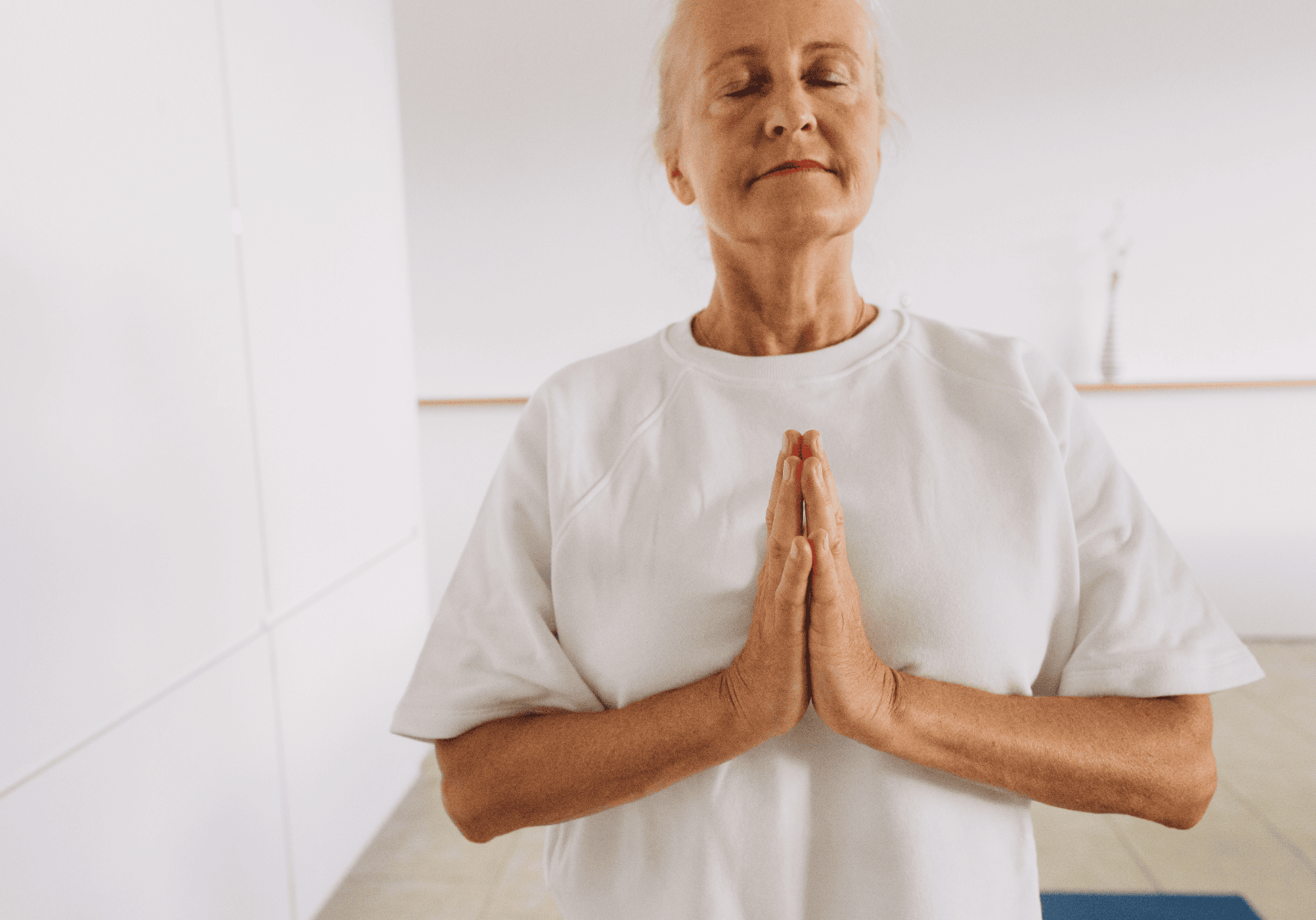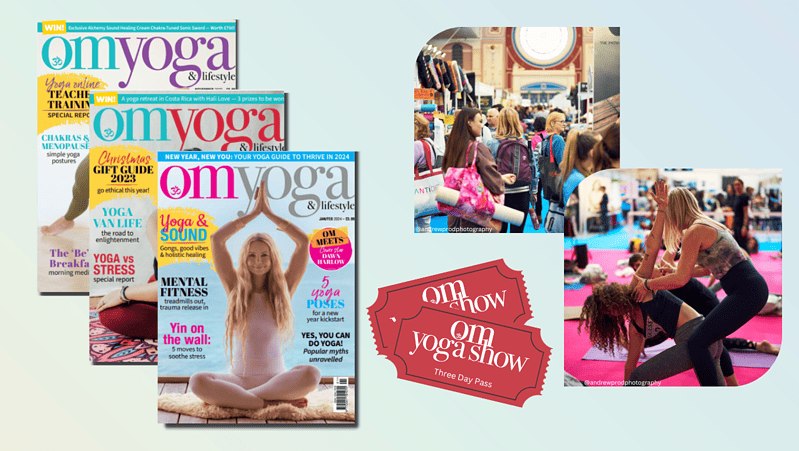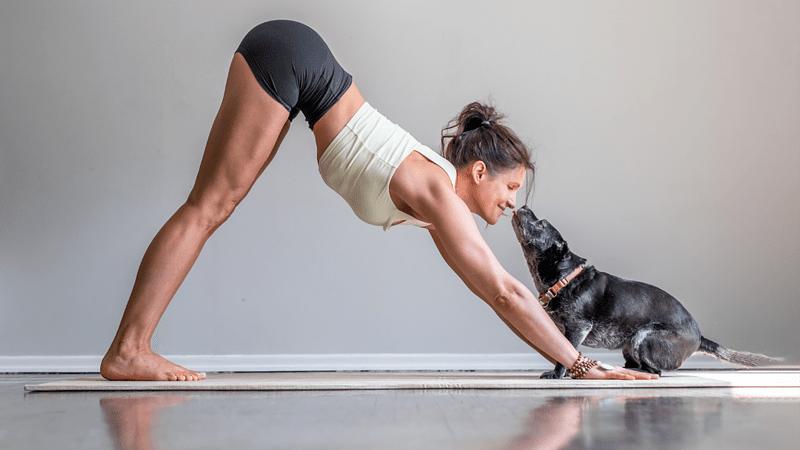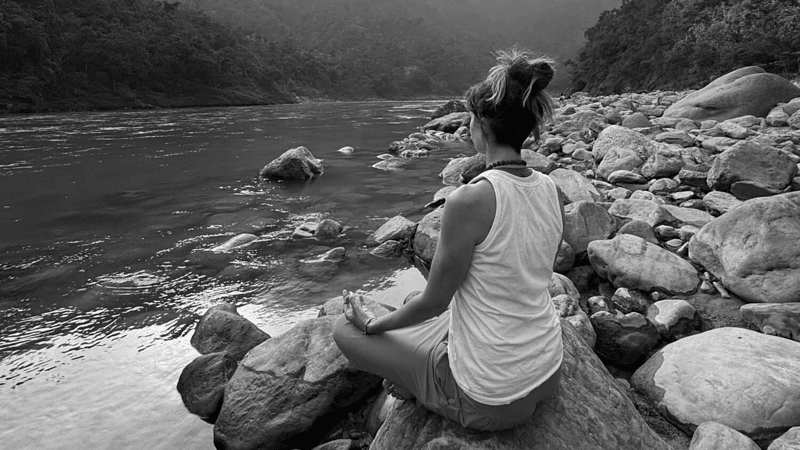
Six Reasons Why I Became a Chair Yoga Fan
The first time I heard about chair yoga was while chatting with my yoga teacher a few years ago in Virginia. She mentioned she was thinking about offering a class. I didn’t know what chair yoga was. Was it really different from traditional yoga? How would you do all the poses that required bending and getting down and up from the floor? Would it be challenging or maybe too easy? I was sceptical.
Reading time: 3 minutes
Two years later we moved to the neighbouring state of Maryland to be close to our daughter. I started looking for options to continue my yoga practice. I selected the county 50-plus centre because it was near my house. But it also offered chair yoga. I had just turned 82 and was finding it hard to get down and get up from the floor in regular yoga, so I decided to give it a try.
Chair yoga is a yoga practice where the poses are performed while seated or with the support of a chair. I’ve found it differs from standard yoga in both style and substance. After three years of doing it, currently at the age of 85, I am relishing the amount of exercise and robust mediation I am getting. These are my reasons for becoming a chair yoga fan.
- Mind-body balance
Chair yoga places a bigger focus on breathing than standard yoga. My class does three breathing practices: alternate nostril breath (Nadi Sodhana Pranayama), 4/7/8 Technique aka the Kumbhaka Pranayama (inhale to count four, hold for count seven, exhale for count 8), and deep belly breathing. These exercises help with muscle relaxation, stabilize blood pressure, and reduce anxiety.
- Improved flexibility
For the traditional yoga class I attended, we lined up on the floor on our yoga mats. The teacher weaved through the bodies giving instructions. We mostly performed the standard Asanas (poses) that required getting down to the floor and getting up many times. In chair yoga we sit in front of the teacher in a circular formation. During the first half of an hour-long practice, we do exercises to move all body parts from toe to neck, some of which require gentle movement of facial and muscular lines.
- Good for the joints
The gentle movement of joints while sitting in a chair helps to alleviate joint pain. These include legs up/down one at a time, moving ankles and shoulders in circular motions, side bends, twists, and forward bends.
A Gentle Practice with Powerful Benefits.
- Better balance
A common concern of older people, including me, is falling. Our chair yoga class does the downward dog, warrior, tree poses and standing march while standing behind or to the side of our chair. We can hold on to the chair, as required, for support.
- Stress relief
The best part of chair yoga is the types of meditation techniques we use. These include the Kundalini yoga chant Sa Ta Na Ma, the Buddhist Om Mani Padme Hum, or the Hindu mantra Om Namah Shivaaya. Once every two months or so we use a rosary to utter a hymn of our choice as we move one bead at a time.
As an alternative to chanting, we visualise imagery with our eyes closed, such as being on the banks of a river looking at leaves floating on the waves and taking our troubles away, sitting on a park bench listening to the birds chirp, enjoying the serenity of a full moon, appreciating the changing colour of tree leaves in fall, or just relaxing on our porch and doing nothing.
- Improved mood
In regular yoga sessions, we used the last two minutes to do the Savasana, laying silently on the floor on our backs. In chair yoga, in addition to meditation, we do positive affirmations such as the one of loving kindness – “may I be happy, may I be healthy, may I be at peace.” We extend these wishes to our children, our grandchildren, other relatives, neighbours, and friends – “may they be happy, may they be healthy, may they be at peace.”
Chair yoga has allowed me to continue my practice into my 80s. It has provided a safer and more practical option that includes what I need to be healthy. However, it’s not just for older people. Chair yoga can be a good form of exercise – both physical and mental – for yogis of any age.
Namaste!





